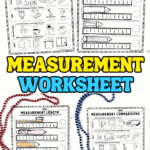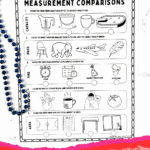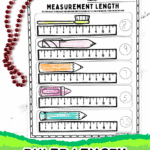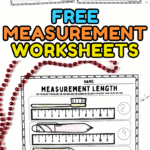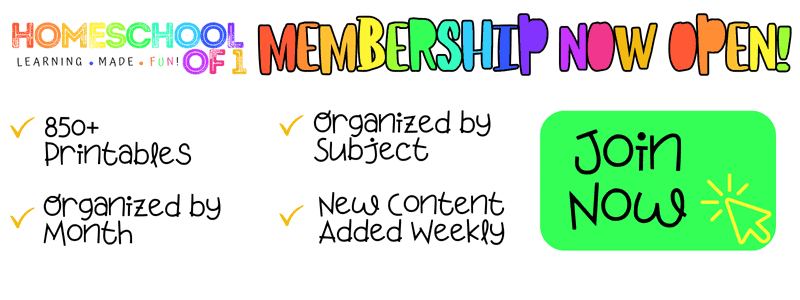Free Measurement Worksheet for 1st Grade
This measurement worksheet helps young learners build real-world math skills in a way that feels fun, not forced.
When my son was first learning to measure things, I realized how much more confident he became once we practiced with simple, everyday examples, like comparing which toy car was longer or which cup held more water.
That’s what this printable is designed to do: make length, weight, temperature, capacity, time, and area easy to understand through hands-on, visual activities.
It’s perfect for ages 5–8, whether you’re homeschooling, teaching in a classroom, or just looking for a little extra math practice at home.
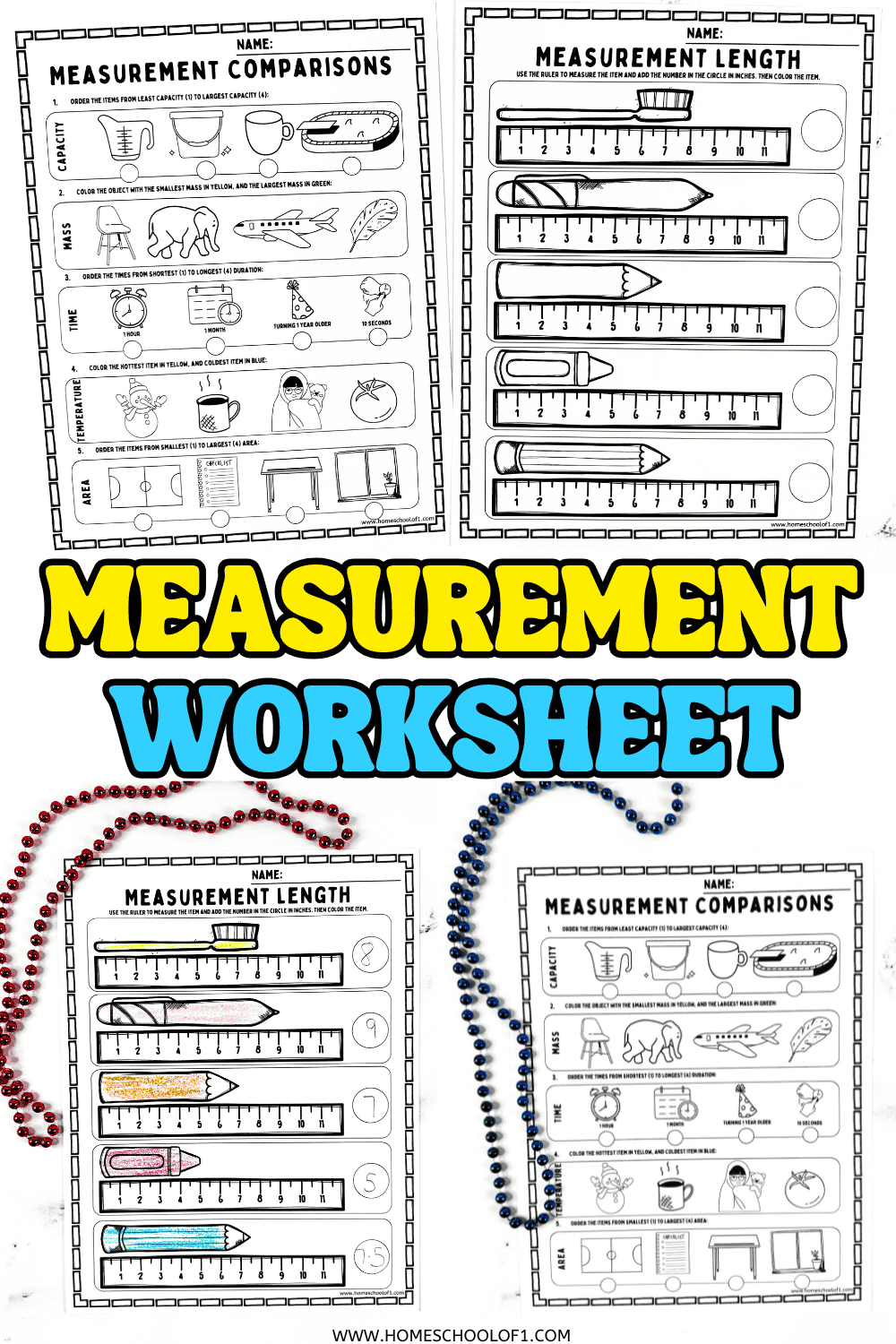
**This post may contain affiliate links. As an Amazon Associate and a participant in other affiliate programs, I earn a commission on qualifying purchases.**
What’s Included in the Worksheet
This two-page printable introduces six key measurement concepts through simple, hands-on activities that keep kids engaged.
Ruler Measurement Worksheet
Children use a ruler to measure everyday items and record their answers in inches. My son always enjoyed this part, especially when he got to color the pictures afterward. It turns basic measuring into a creative task that feels more like play.
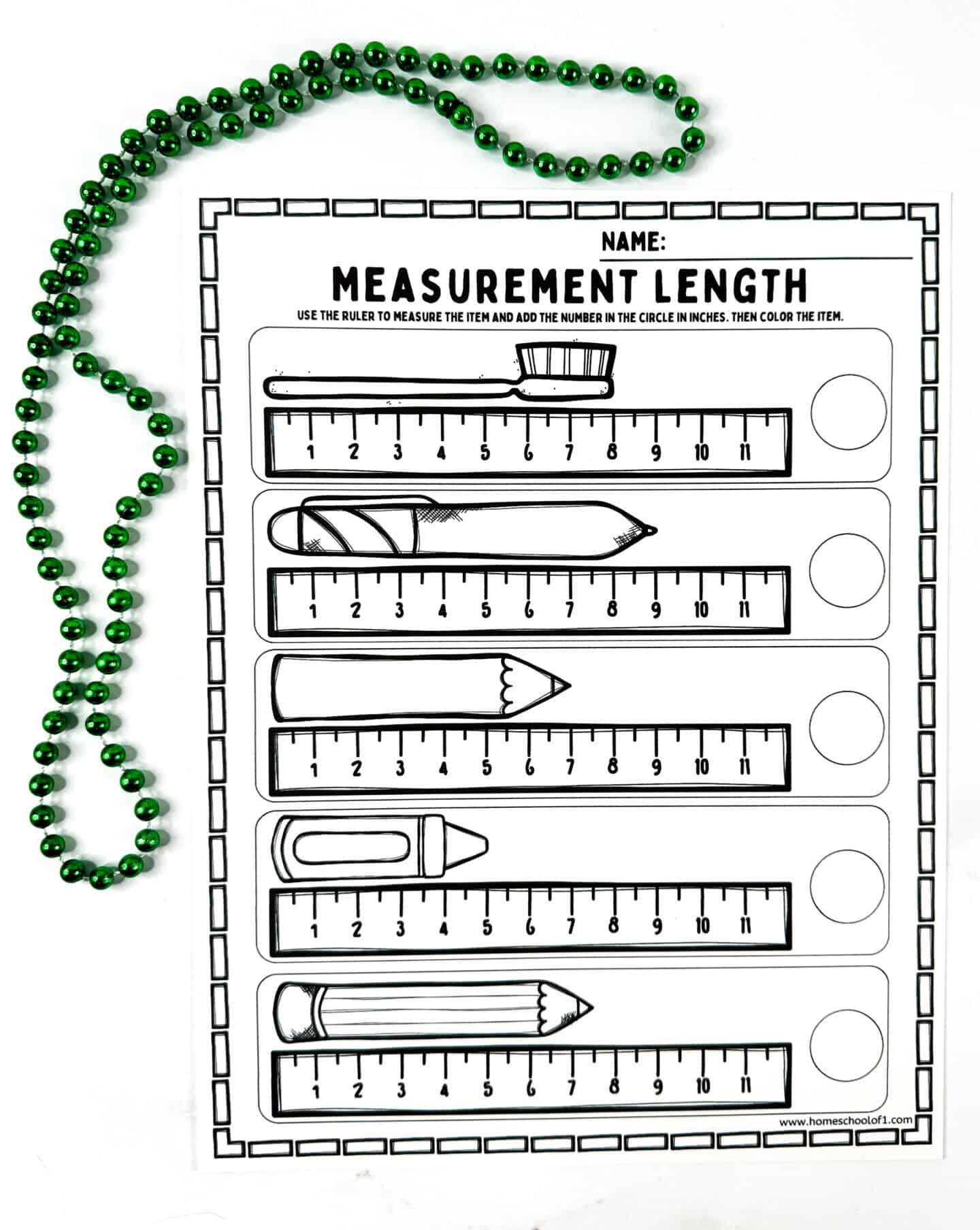
Compare Weight
Kids decide which objects are heaviest and lightest, then color them to show their choices. It’s a quick, visual way to build reasoning and comparison skills.
Identify Temperature
Learners choose which items are hot or cold and color them with warm or cool tones. This helps connect temperature concepts to real-world experiences, like a warm mug or an icy treat.
Sort by Capacity
Children order different containers from smallest to largest, strengthening logical thinking without the need for water or measuring tools.
Understand Time Durations
Kids can use a telling time worksheet alongside this activity to compare tasks that take seconds, hours, or years, building an early sense of sequencing and time.
Compare Area
Students look at shapes and decide which covers more space, a visual introduction to area that encourages spatial reasoning without formal math.
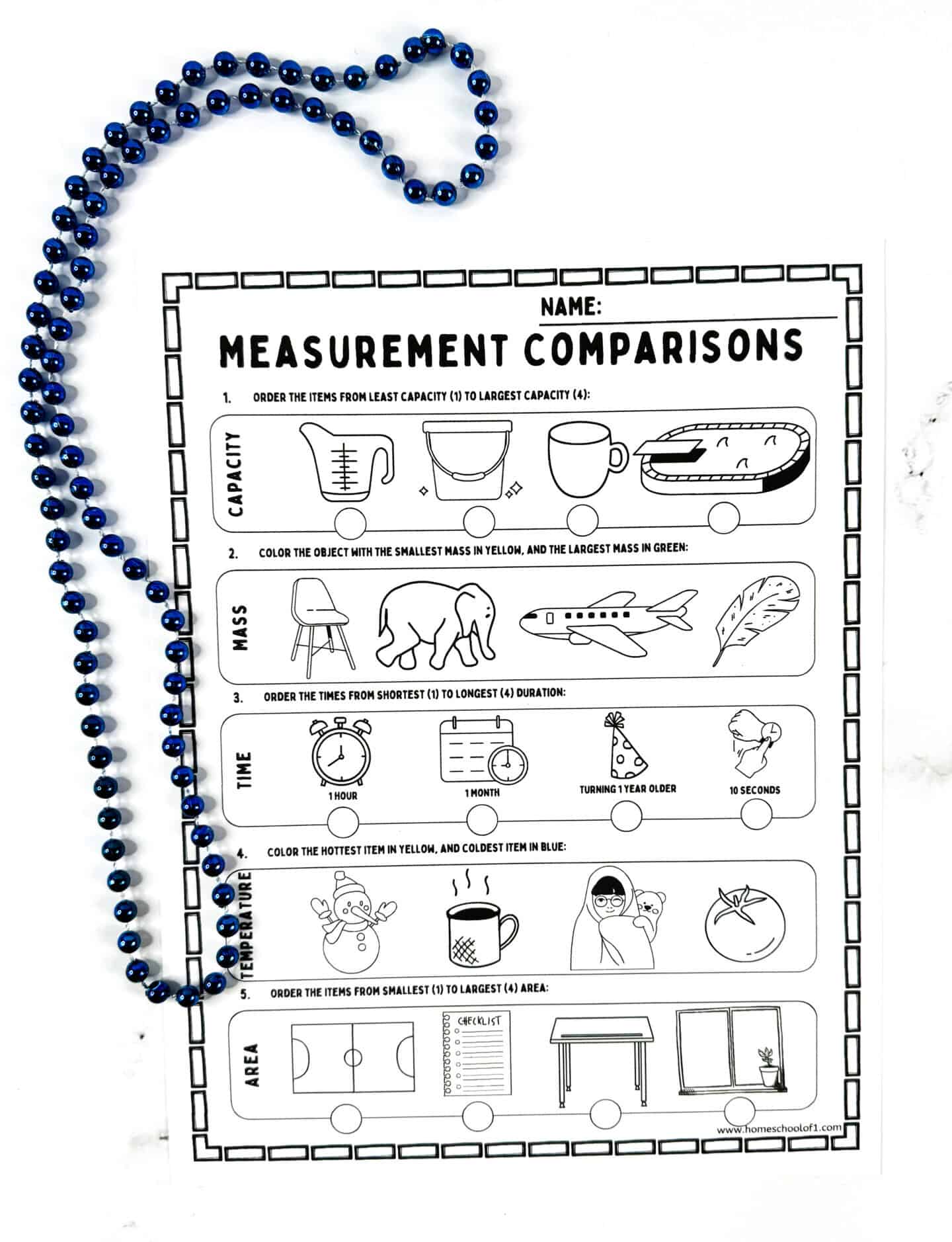
Educational Benefits
This measurement worksheet blends skill-building with creativity, helping kids learn math in a way that feels approachable and rewarding.
Each section supports early grade-level standards while introducing real-world problem-solving, children compare, estimate, and make decisions rather than just follow directions.
As they measure, color, and record their answers, they’re also strengthening fine motor control and hand–eye coordination without even realizing it.
It’s easy to use at home or in the classroom, just print and start exploring measurement through fun, hands-on learning.
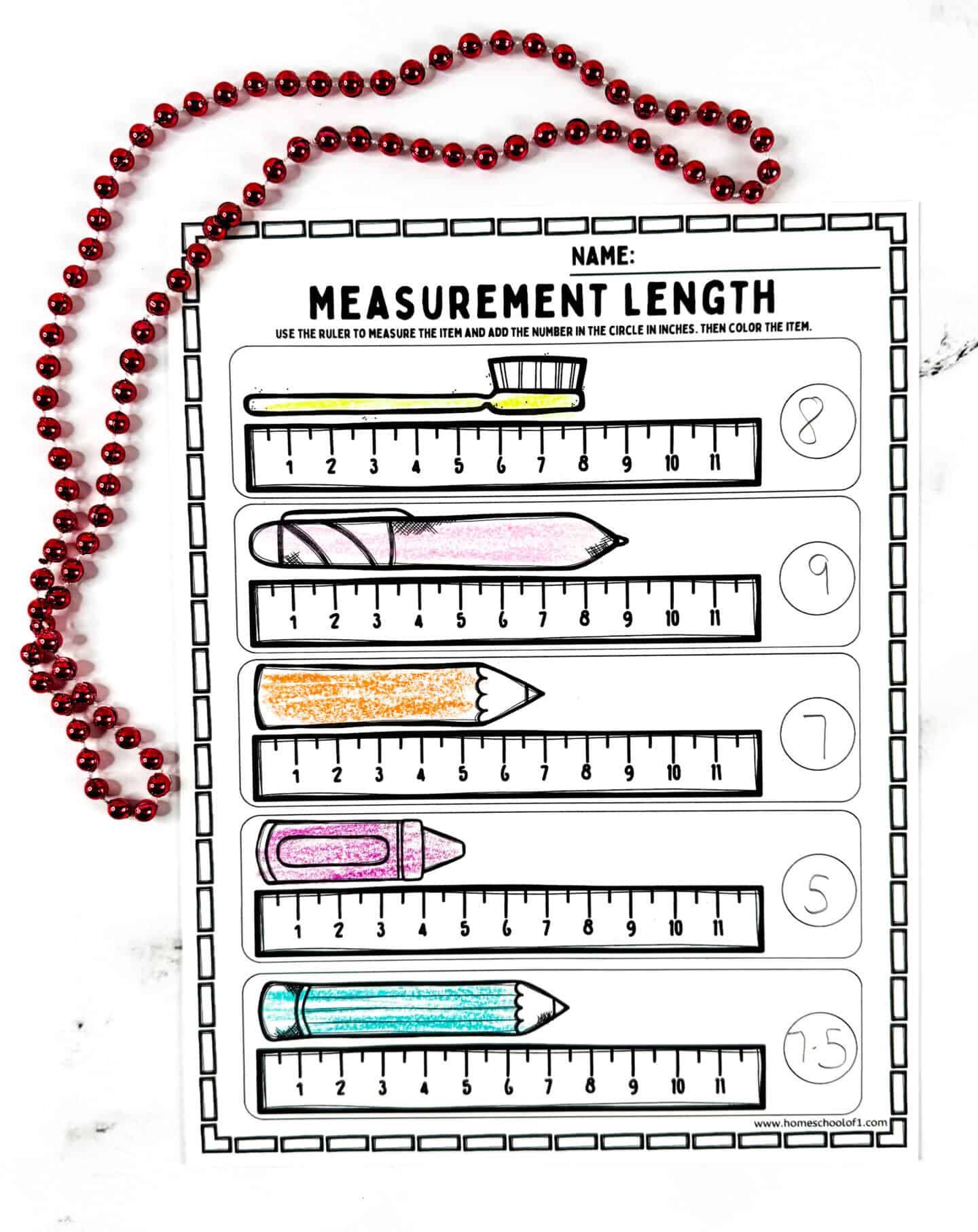
More Math Worksheets
If your child enjoyed the measurement worksheet, you might also like these other free math printables. Each one reinforces core concepts through fun, engaging activities that make math feel more like play than practice.
Turn math review into a game with math bingo, perfect for building confidence in addition, subtraction, multiplication, or number recognition. It works beautifully for classrooms, co-ops, or even family game nights.
The math word search strengthens math vocabulary while sneaking in spelling and reading practice. Kids love finding words like angle, sum, or divide, it’s learning disguised as fun.
For older learners, math Scattergories offers a fast-paced challenge that gets kids thinking creatively about operations, geometry, and terms under time pressure. It’s an engaging way to stretch their reasoning skills while keeping things light.
Books For Teaching Measurement to Kids
Reading about measurement is a simple way to make the concept click for young learners. These picture books tie in beautifully with the measurement worksheet and show how math shows up in everyday life.
How Big Is a Foot? by Rolf Myller – A fun classic that always gets kids thinking about what happens when people use their own units of measure. It pairs perfectly with the length activity and never fails to spark laughter and curiosity.
Inch by Inch by Leo Lionni – This sweet story of an inchworm using its body to measure everything in sight is a lovely way to introduce nonstandard units. My son loved guessing what the inchworm would measure next.
Measuring Penny by Loreen Leedy – A favorite in many early math lessons, this one shows measurement in real-life ways, length, weight, and time, through a child and her dog. It’s engaging and easy for kids to relate to.
Millions to Measure by David M. Schwartz – Ideal for slightly older kids who are ready to compare U.S. and metric systems. It brings humor and big ideas together, helping children understand why measurement matters beyond the worksheet.
Get Your Free Measuring Worksheet Here!
If you don’t see the form below, click here to get the free worksheets.

